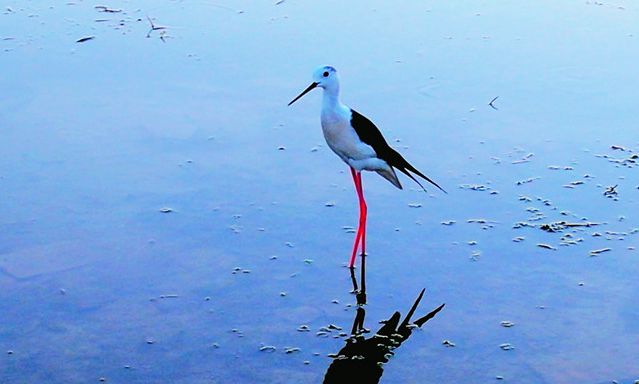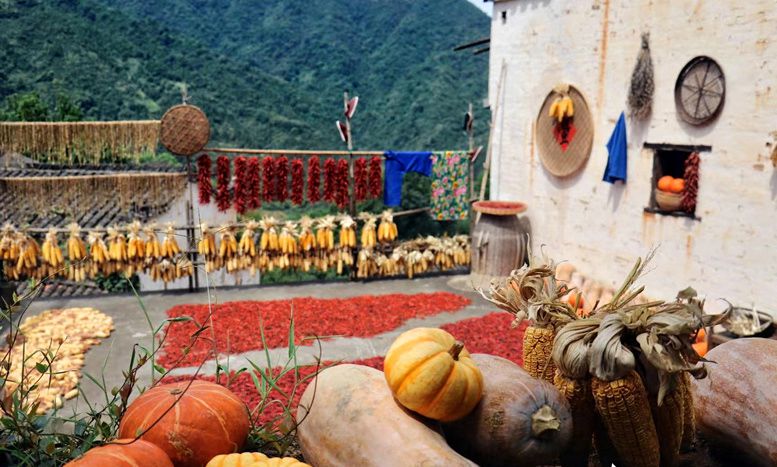Regions along Yellow River promote efficient utilization of water resources
Originating in northwest China's Qinghai province, the Yellow River, known as China’s "Mother River" and the cradle of Chinese civilization, flows across nine provinces and autonomous regions.
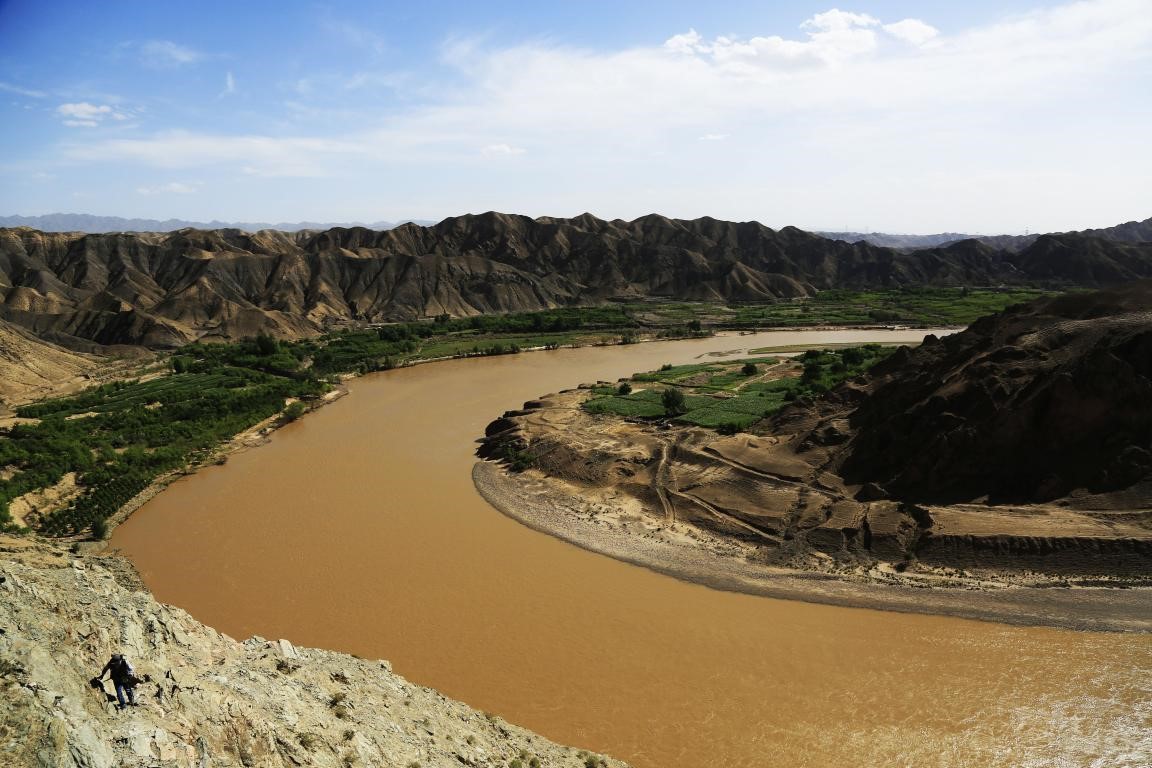
Photo taken on June 28, 2022 shows a section of the Yellow River in Damiao village, Xinglong township, Jingyuan county, northwest China's Gansu province. (People's Daily Online/Chen Li)
It accounts for only 2 percent of China's total water resources, but feeds 12 percent of the country's population, irrigates 17 percent of the country's farmland and supplies water to over 50 large and medium-sized cities in the country.
The per capita share of water resources in the Yellow River basin is only 27 percent of the national average.
In recent years, provinces and autonomous regions along the Yellow River have made constant efforts to improve their capability in the intensive and economical utilization of water resources and to promote intelligent technologies of water utilization, so as to effectively utilize every drop of water in the "Mother River."
In Daya village, Yanuan township, Linze county, northwest China's Gansu province, fields of corn are growing vibrantly. Different from the traditional method of flood irrigation, irrigation pipelines are now paved in the fields from which "nutrition solution" made from water and fertilizers is dripping to nourish the roots.
The "nutrition solution," moistening the corn, is also leading villagers to a better life.
"In the past, each mu (667 square meters) of the corn field would cost 300 yuan for irrigation and another 200 yuan for fertilizers, while now it only takes less than 300 yuan for both," said corn grower Zhang Zhongguo from the village.
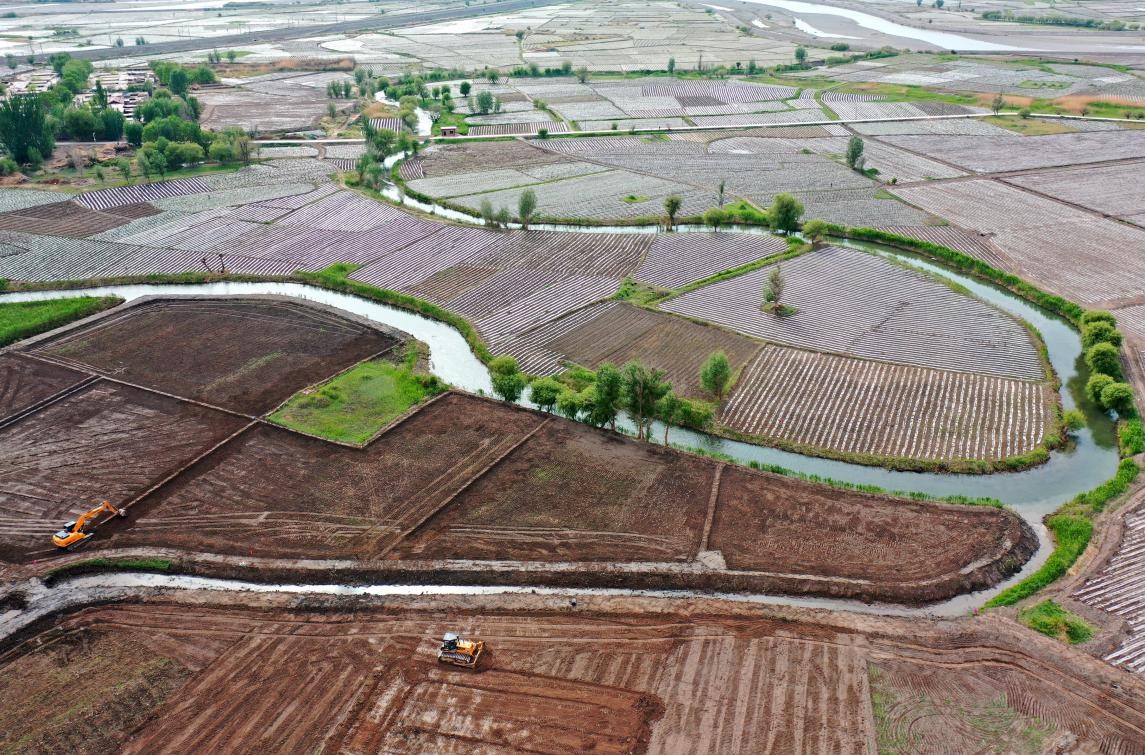
Excavators are leveling farmland in Wujiang township. Ganzhou district, Zhangye, northwest China's Gansu province, May 14, 2021. Ganzhou district has vigorously promoted the construction of high-standard farmland to optimize rural ecology. By providing farmers with water-saving irrigation technologies, farming machines and logistics support, the district has prominently improved the production efficiency of the agricultural sector. (People's Daily Online/Yang Yongwei)
Since 2020, the village has implemented a program of high-standard farmland leveling and established an irrigation system that covers everything from the water source to the farmland. It has built 26,700 hectares of high-standard farmland and changed its agricultural water use to efficient drip irrigation.
Ningxia Hui autonomous region, which is adjacent to Gansu, is also a big promoter of water-saving irrigation methods. In recent years, the autonomous region has popularized the technology of drip irrigation. It has set quotas for water consumption and established a whole-digital platform for water exchange. At present, Ningxia is home to over 4 million mu of farmlands adopting high-efficiency water-saving irrigation methods, which account for over half of the autonomous region's irrigated area.
Henan province, sitting in the lower reaches of the Yellow River, is speeding up its steps to effectively divert water from the river for irrigation.
Lizhuang township, Fengqiu county of Henan province is located on the floodplain of the Yellow River, where little water resources could be used for irrigation in the past. This year, the township introduced large pumps and excavated new irrigation channels diverting water to the fields from the river.
"We planted over 60 mu of crops, with each mu yielding 500 kilograms on average. The highest yield has hit 600 kilograms per mu," said villager Tian Wenjun. The out-of-expectation yield this year came from the irrigation water diverted from the Yellow River, Tian added.
Agricultural water consumption accounts for over 60 percent of the total water use in the Yellow River basin. To advance water conservancy in the Yellow River, relevant parties must promote efficient utilization of water resources, accelerate the modernization of large- and medium-sized irrigation areas, and promote water-saving technologies such as spray irrigation and integrated water and fertilizer technology.
According to statistics, the efficient utilization index of irrigation water in the farmlands of the Yellow River basin has increased from 0.554 in 2019 to 0.566 in 2020, and the actual use of irrigation water per mu of farmland is lower than the national average. The index is expected to exceed 0.58 by 2025.
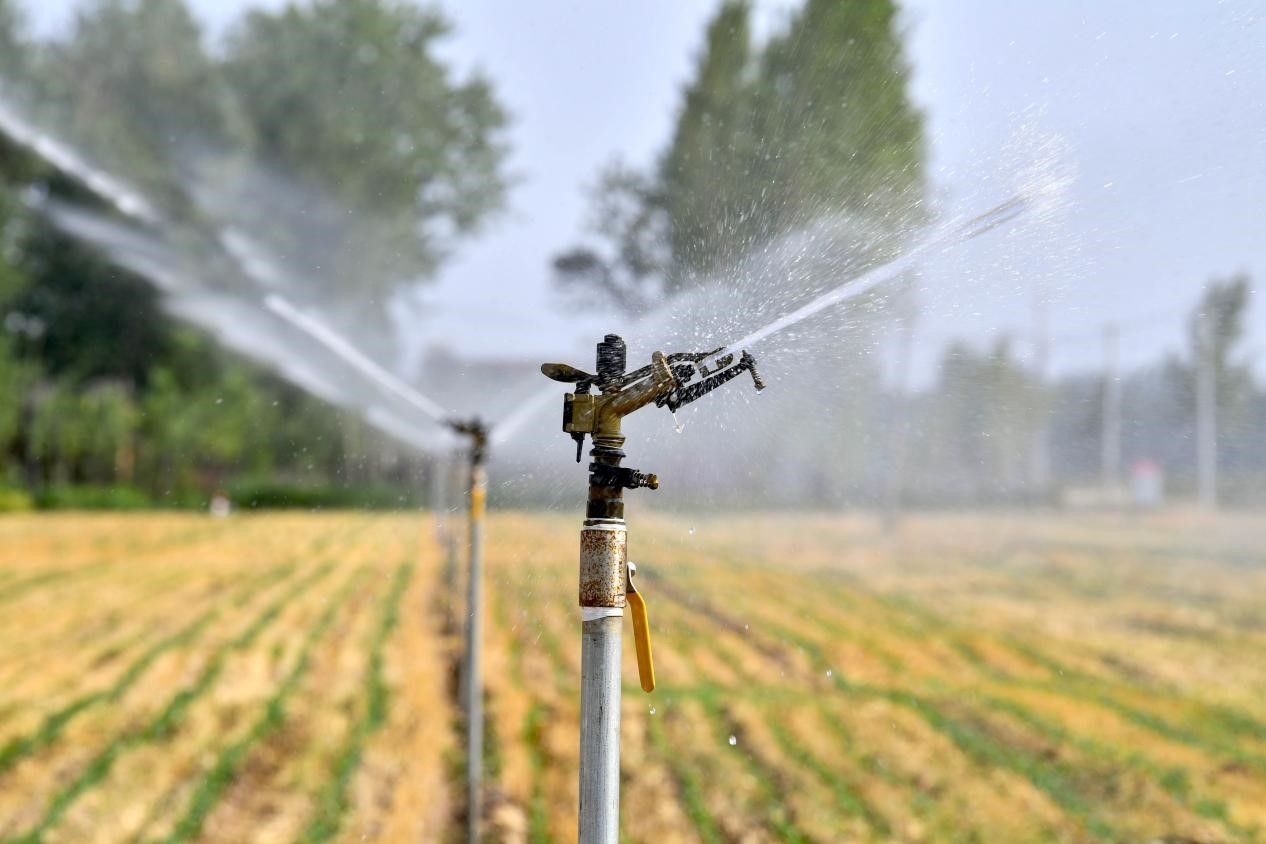
Photo taken on June 20, 2022 shows an automatic irrigation system in an unattended farmland in Zhaoqiao township, Qiaocheng district, Bozhou, east China's Anhui province. (People's Daily Online/Liu Qinli)
A smart green irrigation system is on display at the headquarter of the Yellow River Conservancy Commission of the Ministry of Water Resources. The system is able to carry out real-time water demand forecasting for green areas and remotely monitor whether the farmland needs to be irrigated. It irrigates crops with purified rainwater, grey water, and AC condensate drain.
Such smart technologies will be applied more widely after a water utilization plan was issued last December for water conservancy in the Yellow River basin.
At present, smart water supply systems have been adopted in part of the townships and enterprises in the Yellow River basin. The systems are able to acquire real-time information about water pressure and volume. Once abnormal situations are detected, they will immediately inform relevant staff members and repair to reduce the losses.
It is reported that 6,392 intelligent monitoring stations for underground water have been established in north China, which can prevent unreasonable use of underground water by monitoring major consumers that draw over 200,000 cubic meters of underground water annually. In the future, the utilization and management of water resources in the Yellow River basin will become more intelligent and be further refined.
Photos
Related Stories
- A 'ladder' by the Yellow River
- China issues plan for preserving, using cultural relics along Yellow River
- Scenery of Hukou Waterfall on Yellow River
- China to improve Yellow River basin protection through legislation
- Reservoir on Yellow River boosts water flow to assist spring farming
- China to formulate law on protection of Yellow River
- Yellow River protection regulation takes effect in China's Ningxia
- Chinese policy bank increases ecological support in Yellow River
- China's Yellow River basin sees remarkable improvement in ecological conservation
- Chinese vice premier urges eco-conservation in Yellow River basin
Copyright © 2022 People's Daily Online. All Rights Reserved.







